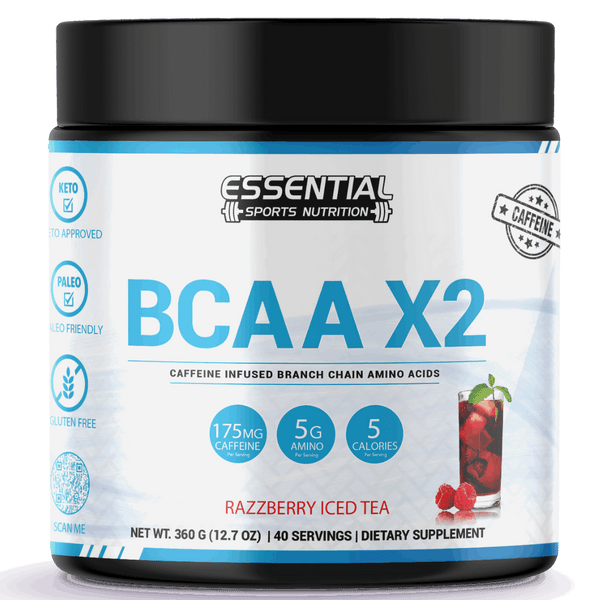Exercises for Neck Pain Relief
It's no secret that your neck has been plotting against you, its every twinge a reminder that modern life isn't exactly a pain in the neck—it's more like a full-blown conspiracy.
But don't worry, you're not defenseless in this ongoing battle. Gentle exercises designed specifically for neck pain can be your secret weapon, offering relief and fortifying your neck against the perils of poor posture and that pesky gravity.
You might be asking yourself which exercises can perform such magic and how you can integrate them into your daily routine without making a trip to the physiotherapist's office as regular as your morning coffee.
Stay tuned, and you'll discover simple techniques to not only soothe your rebellious neck but also to strengthen it, giving it the armor it needs to withstand the modern world's daily assaults.

Key Takeaways
-
Identifying and assessing the location, nature, and triggers of neck pain is important.
-
Gentle neck stretches can help loosen muscles and release tension.
-
Strengthening neck muscles through resistance exercises can alleviate pain.
-
Maintaining proper posture, taking breaks, and practicing neck rotations and shoulder rolls can prevent neck pain.
Identifying Your Neck Pain
To effectively tackle your neck pain, it's crucial to first pinpoint the precise location and nature of your discomfort, whether it's a general stiffness, a piercing ache, or a persistent soreness. Understanding the specific type of neck pain you're experiencing is vital in determining the right course of action.
Notice if certain movements or positions cause you to feel a stretch or additional pressure on the muscles in your neck, as this can provide clues about the underlying issue.
Monitor any triggers or patterns that seem to exacerbate your neck pain. Does it flare up after long hours at the desk or during specific times of the day? This can help you identify lifestyle factors that may need adjustment.
Also, assess how long the pain lasts and how often it occurs. Is it an acute reaction to a recent strain, or has it become a chronic part of your daily life?
Don't ignore additional symptoms like headaches or numbness in your arms. These could be crucial indicators of a more complex condition. It's important to consult with a healthcare professional who can assess your symptoms and provide a proper diagnosis, ensuring you receive the most effective treatment for your neck pain.
Gentle Neck Stretches

Easing into gentle neck stretches can offer relief from discomfort and enhance your neck's flexibility. When you're struggling with neck and back tension, it's essential to approach stretching with care. Here's how you can perform these Neck Stretches effectively:
-
Side-to-Side Neck Turn: Sit or lie down comfortably. Slowly turn your head to the right until you feel a stretch on the left side of your neck. Hold for a few seconds, then gently return to the center. Repeat on the left side. This helps in loosening the muscles on each side of your neck.
-
Forward Head Tilt: Remain seated or lying down. Gently tilt your head forward, bringing your chin toward your chest. You'll feel a stretch along the back of your neck. Hold briefly, then slowly lift your head back up. This exercise is ideal for releasing tension in the neck and upper back.
-
Shoulder Stretch: While maintaining good posture, extend your arms out to the sides. Slowly move them back, squeezing your shoulder blades together. You should feel a stretch across your shoulders and chest. This not only benefits your shoulders but also helps in alleviating neck strain.
Remember to use a pain rating scale to gauge your level of discomfort. Keep your movements gentle, ensuring the pain doesn't exceed a moderate level (0 to 5). If it does, modify the stretches to reduce strain.
Strengthening Neck Muscles
While gentle stretches help to alleviate neck pain, incorporating exercises that strengthen the neck muscles can significantly improve your neck's stability and reduce the likelihood of future discomfort. You can perform these exercises in different positions—sitting, lying on your back, or standing—to find the most comfortable and safe stance for you.
Try to engage in resistance exercises, such as neck retraction or extension, where you slowly turn your head from side to side, and lateral extension or tilted forward flexion, where you bring your chin toward your chest. Isometric exercises like resistance presses against the palm or towel pulls also provide the necessary resistance to strengthen your neckmuscles.
Here's a structured approach to your strengthening routine:
| Exercise Type | Description |
|---|---|
| Neck Retraction | Pull your head straight back, keeping your jaw level. |
| Neck Extension | Tilt your head back, looking up at the ceiling. |
| Rotation | Slowly turn your head to look over your shoulder. |
| Lateral Extension | Tilt your head to bring your ear towards your shoulder. |
| Forward Flexion | Bring your chin toward your chest gently. |
Ensure you hold each position for 10 seconds, and remember to increase the intensity gradually. It's crucial to keep your pain levels between 0 to 5 on a pain rating scale, modifying exercises as needed to avoid excessive discomfort.
Maintaining Proper Posture
Maintaining correct posture is essential for reducing neck strain and preventing pain. When you're sitting or standing, it's important to keep your neck aligned with your spine to minimize stress on your neck muscles and ligaments. Here's how you can ensure your posture is helping, not hurting your neck:
-
Align Your Ears with Your Shoulders: Make sure your head isn't thrust forward. Imagine a straight line descending from your ears to your shoulders. This alignment keeps your head back and reduces the strain on your neck.
-
Adjust Your Computer Screen: Position your screen at eye level. You shouldn't have to look down or up for extended periods, as this can lead to neck discomfort. The right screen height will encourage proper posture without you even thinking about it.
-
Take Frequent Breaks: If you're in the same position for a long time, take a break every 30 minutes to stretch. Simple neck rotations and shoulder rolls can make a big difference in maintaining flexibility and preventing stiffness.
Neck Pain Prevention Tips
To prevent neck pain, it's crucial to integrate daily habits that support muscular health and ensure proper spinal alignment. One of the most effective neck pain prevention tips is to maintain a neutral posture, particularly when you're sitting for long periods. This means keeping your head directly above your neck, not jutting your head forward, which places undue stress on your cervical spine.
Experts in sports medicine often emphasize the importance of strengthening exercises for the neck and upper back muscles. Strong muscles can better support your head, reducing the likelihood of strain and discomfort. Incorporating such exercises into your routine can make a significant difference in preventing neck pain.
Additionally, it's essential to take frequent breaks if you're engaged in activities that require you to look down or hold your head in one position for too long. Every hour, try to get up, stretch, and move around to alleviate potential tension. And when using devices, make sure they're at eye level to avoid the dreaded 'text neck.'
Lastly, don't overlook the power of good sleep ergonomics. Choose a pillow that supports the natural curve of your neck and try to sleep in a position that maintains the alignment of your spine.
With these proactive steps, you can help keep neck pain at bay.
Neck Pain FAQs:
Q: What are the common causes of neck pain?
A: Neck pain can be caused by a variety of factors, including poor posture, muscle strain, injury, or underlying health conditions such as herniated discs or arthritis.
Q: How can exercises help relieve neck pain?
A: Stretching and strengthening exercises can help alleviate neck pain by improving flexibility and strengthening the muscles that support the neck and spine.
Q: What types of exercises are beneficial for neck pain relief?
A: Neck rotation, neck flexion and extension, and shoulder and neck stretches are some examples of exercises that can help relieve neck pain and stiffness.
Q: Can poor posture cause neck pain?
A: Yes, poor posture can cause strain on the postural muscles of the neck and upper back, leading to discomfort and neck pain.
Q: How can exercising the neck and back help with pain relief?
A: Strengthening and stretching the neck and back muscles can help improve posture, reduce strain, and alleviate neck pain and discomfort.
Q: Are there specific exercises to avoid for neck pain relief?
A: It's important to consult a physical therapist or healthcare professional for personalized advice, but generally, exercises that involve sudden or jerking movements should be avoided.
Q: How often should I perform exercises for neck pain relief?
A: A consistent exercise routine, as recommended by a physical therapist or healthcare provider, can help improve neck pain. However, overdoing it may exacerbate the pain, so it's important to follow a tailored exercise program.
Q: Can neck exercises contribute to lower back pain relief?
A: Yes, stretching and strengthening exercises for the neck can also benefit the supporting muscles of the spine and contribute to overall back pain relief.
Q: Where can I find a transcript of exercises for neck pain relief?
A: The recommended exercises, along with a transcript, can often be found on reputable health information websites or provided by a physical therapist.
Q: How do neck exercises help in preventing future neck problems?
A: Engaging in a regular exercise routine that focuses on neck and back strengthening and flexibility can help improve posture and reduce the risk of future neck problems.
Other Frequently Asked Questions:
What Exercise Relieves Neck Strain?
You're asking about alleviating neck strain, right?
Well, one effective exercise is the chin tuck. You'll want to stand straight, look forward, and pull your chin straight back, creating a 'double chin.' Hold it for 5 seconds, then release. Repeat this 10 times.
It's a simple move that strengthens your neck muscles and improves posture, helping to relieve the tension that's causing you discomfort.
Always remember to keep it gentle!
What Not to Do When You Have Neck Pain?
When you're in pain, your neck can feel as stiff as a board, and it's crucial you don't make it worse. Don't ignore the discomfort or power through the pain.
Steer clear of sudden movements and heavy lifting. Slouching is your enemy; maintain good posture to prevent extra strain.
Also, avoid staying in one position too long or repeating movements that could aggravate your neck. Listen to your body and give it the care it needs.
Should You Stretch a Pulled Neck Muscle?
Yes, you should stretch a pulled neck muscle, but do it carefully. Begin with slow, gentle movements and don't push if it hurts. It's vital to ensure you're not worsening the injury.
If unsure about the proper technique, it's best to get advice from a healthcare professional. Remember, going too far can harm your recovery, so keep stretches light and don't overdo it to help your neck heal properly.
How Do You Get Tension Out of Your Neck?
You're typing away at your desk when you notice your neck feels like it's in a vice. To release that tension, you've got to target the muscles.
Try gently tilting your head from side to side, holding for a few seconds on each side. This simple stretch can help loosen those tight spots.
Strengthen and Stretching
In wrapping up, remember that keeping your neck in tiptop shape is no walk in the park. You've got to stretch, strengthen, and stand tall to fend off the pain. Stick to these exercises and heed our prevention tips; they're your best bet for a supple, strong neck.
Don't cut corners—consistency is key. Your neck supports you every day, so return the favor with routine care to keep those aches at bay.























